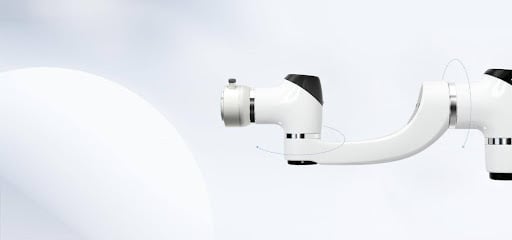Collaborative robots (cobots) are becoming increasingly common in manufacturing facilities worldwide. They assist human workers by handling lifting, tedious motions, and repetitive sub-processes. Their expanding use helps resolve labor shortages while boosting operation productivity. As a result, many companies now rely on cobots to enhance output, reduce injuries, and optimize the workforce. However, selecting the appropriate collaborative robot model requires evaluating attributes specific to the intended environment and tasks. By carefully inspecting key suitability criteria, businesses can invest in a cobot optimized to deliver maximum benefits over the long term.
Key Factors to Consider When Purchasing Cobots
Selecting a collaborative robot requires evaluating important criteria to find the best fit. Cobots vary in their safety features, abilities, certifications, and manufacturer support quality. Considering the following factors ensures choosing a cobot solution optimized for the intended tasks:
1. Safety
Cobots require robust safety components as they work near human operators. Joint torque controls and integrated sensors are critical to monitoring cobot motion and detecting unexpected contact to prevent injury. Motion delays or immediate stops help ensure safety.
2. Applications
The specific application and task requirements should dictate the choice of cobot. Consider the workspace size, payload capacity, and precision needed for the task. IP protection class impacts how cobots perform in dusty or wet areas like food processing. Temperature ranges help select models rated for warmer or cooler working conditions.
3. Performance
Evaluate payload weights and dimensions the collaborative robot must reliably handle daily. Typical cycle times indicate how many parts a cobot can grasp per minute. Further factors to consider include accuracy tolerances and automation speeds for various applications.
4. Flexibility
Consider a cobot’s mobility within work cells and ability to transfer easily between separate production lines and locations for diverse tasks. Controllers improve teach pendant portability. Tool changeouts enable using the same cobot for multiple jobs. This flexibility optimizes floor space usage.
5. Certificates
International certifications demonstrate a collaborative robot complies with critical safety standards. Check certifications for quality, performance, safety, etc.
6. Support
Support influences uptime and total ownership costs. Compare the company’s training quality and comprehensive guidance material. Evaluate response times from local technicians and spare parts availability. Online support communities extend technical assistance.
7. References
Researching comparable applications aids in assessing a cobot’s reliability over extended operation periods. Testimonials shed light on true performance handling specific workload types and volumes. This validates a collaborative robot that matches target production needs.
Han’s Robot Offers Wide Selection of Reliable Cobots
Han’s Robot is a leading cobot company with years of industry experience. The brand helps customers globally achieve automation objectives through its diverse portfolio. It focuses on continuous innovation to tailor cobots that meet evolving demands. The manufacturer offers a wide selection of reliable collaborative robots to suit specific needs, backed by industry-leading expertise, support, and safety. Customers worldwide have benefited from increased productivity, reduced labor costs, and enhanced working conditions using its cobots. The top reasons to choose the brand’s cobots include:
- Secure Collaboration: The company’s intelligent cobots employ modular, torque-controlled arm designs and integrated sensors to collaborate securely with people. For example, the Elfin-Ex adopts a leak-compensated positive pressure explosion-proof system.
- Versatile Applications: Models vary to suit welding, assembly, packaging, and other tasks across industries like automotive and electronics.
- Enhanced Productivity: Cobot palletizer payloads from a wide range enable handling components from small parts to heavy lids or pots. The S35 Robot can handle weights of 35kg.
- Agile Deployment: The brand’s cobots easily redeploy between work cells or locations via controller and teach pendants.
- Compliant Solutions: All products comply with a prestigious array of certifications/standards, e.g., CE, CR, UL, KCs, SEMI S2, ISO 5, IP66, National Explosion-proof, etc., meeting worldwide regulatory needs.
- Technical Support: The company provides thorough training and ongoing global technical support for the lifespan of each cobot.
- Proven Performance: Numerous satisfied multinational customers attest to the reliability of the manufacturer’s cobots in live production environments.

Conclusion
Selecting the right collaborative robot requires evaluating key factors like its safety features, flexibility to handle various applications and tasks, technical specifications matching requirements, quality certifications, and the manufacturer’s support capabilities. As a trusted partner to customers in over 100 countries, Han’s Robot provides high-performance, dependable cobots meeting diverse automation needs alongside comprehensive support. Visit the company’s website to explore its full range of collaborative robot solutions advancing precision, productivity, and safety on the plant floor.
